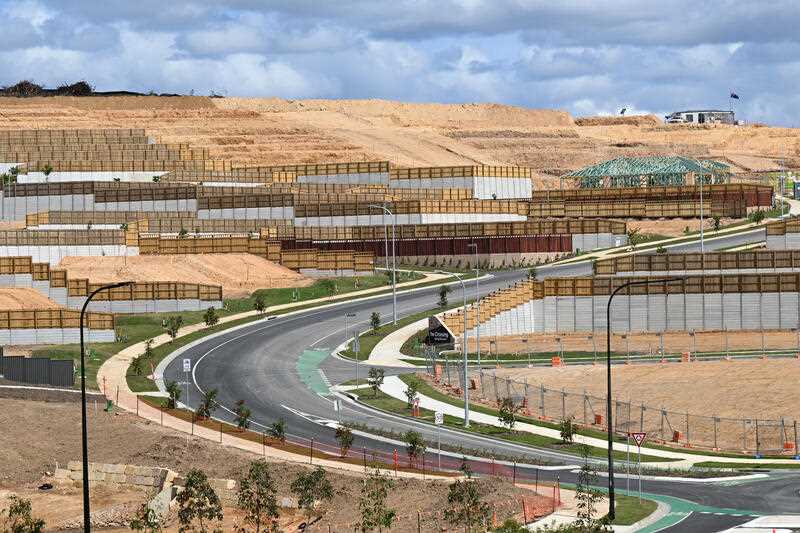New laws to set up a Housing Australia Future Fund aren’t expected to save people from tipping into housing stress or homelessness.
“The Commonwealth has gone from an F on housing to a C-minus, and they should be aiming for an A,” Joel Dignam, executive director at advocacy organisation Better Renting, told AAP.
Australians have until Wednesday to have their say on a federal housing legislation package, which includes a new advisory body, before the laws are introduced to federal parliament early this year.
The new National Housing Supply and Affordability Council will provide advice on social housing for the most vulnerable, affordable housing for key workers, and how to get the best out of the private housing market.
Meanwhile, the construction industry would like a seat at the table to provide practical advice.
The Albanese government aims to add one million homes to the nation’s housing stock over five years from 2024.
There’ll be 30,000 new social and affordable housing properties through the $10 billion Housing Australia Future Fund.
Another 10,000 affordable homes will be matched with a further 10,000 from state and territory coffers, under a national housing accord struck last year.
The Housing Industry Association says the supply of land will need to quickly improve, and costs decline, to meet the lofty goals.
The accord also brings swings and roundabouts, in the form of gains and losses.
Advocacy group Everybody’s Home warns that Australia is set to lose thousands of affordable homes in 2023 after the scrapping of the existing National Rental Affordability Scheme for people earning low and middle incomes.
Federal data shows more than 6600 affordable NRAS homes will be lost this year, and more than 36,000 affordable rentals will have exited the scheme by the time it ends in 2026, according to the group’s spokeswoman Maiy Azize.
Queensland will be hardest hit by the phasing out of the scheme, losing 2499 affordable houses, she says.
Victoria will lose 1356, Western Australia will see the loss of 1110. In South Australia, 806 will be removed and NSW will lose 605.
“Australia already has a social housing shortfall of 500,000 homes, and the rental market has never been tougher,” she said, kicking off a campaign on Monday.
“These figures show that we’re losing even more affordable rentals at a time when Australians can least afford it.”
Mr Dignam says the new $10 billion fund is an important step but wants governments to look at immediate help.
“State and territory governments should be looking at ending unfair evictions and implementing measures to limit runaway rent increases,” he says.
“The Commonwealth could help drive this through the next National Housing and Homelessness Agreement.”
The agreement is the main tool to get federal funding to states and territories, which the governments are required to match from state and territory coffers.
A Productivity Commission review of the agreement found Australians, particularly those on low incomes, are spending more on housing than they used to and demand for social housing is rising.
More people are seeking help for homelessness and more are being turned away, the review found.
Home ownership rates are falling, particularly for young Australians, even before rising interest rates put the squeeze on mortgages.
Federal Housing Minister Julie Collins has had a series of meetings with state and territory counterparts to extend and expand the agreement from June, when it’s due to expire.
Mr Dignam said the federal government should also increase Commonwealth Rent Assistance, which would make a big difference to keep people out of housing stress.
“Everyone needs a home, so governments have a responsibility to ensure an adequate supply of housing that people can afford,” he said.
New figures have confirmed the worsening housing crisis in NSW with the overall number of people on the NSW Housing Register’s waiting list surging to 57,550 households in 2022, up 13 per cent on 2021.
In Queensland, a revamped Housing Supply Expert Panel includes people from real estate, property development, town planning, demographics, economics and Indigenous housing.
Land supply was identified as a key issue in the Property Council’s recent report, A Home For Every Queenslander.
Real Estate Institute of Queensland CEO and panel appointee Antonia Mercorella says there’s no denying accessibility and affordability challenges are complex and widespread across the state.
She says private investment will continue to play a key role in providing housing, and rental supply for the 36 per cent of Queenslanders who rent their homes.
In South Australia, ageing public housing is being demolished to make way for a $70 million, 130-plus apartment “build to rent” project on Adelaide’s city-fringe.
The federal-state partnership will provide social housing and income-based rentals for key workers, including nurses, police and ambos.
The SA Housing Authority expects to finalise a community housing provider in early 2023 to build and manage the shovel-ready project.
As well as new laws to splash taxpayer funding, Treasurer Jim Chalmers says he expects superannuation funds and other institutional investors to bankroll social and affordable housing.
He established a roundtable in November to identify and overcome barriers to investment in national priority areas, starting with housing.
By Marion Rae in Canberra



